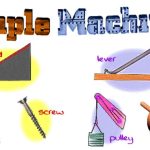The principle materials used in building structures and machines include metals and their alloys, concrete, wood, stones, bricks and other clay products, bituminous materials and plastics. The products finally produced with these materials should be strong enough to resist the forces coming on it without undergoing deformation so as to put it out of use. The product should be durable. The required properties for different usage is different. Hence an engineer must know the required properties for his products. Various properties of materials may be grouped into:
(a) Physical Properties
(b) Mechanical Properties.
Physical Properties
The various physical properties of the materials are briefly explained below:
1. Density: It is defined as mass of a material per unit volume. Kilogram is the unit of mass in SI system. It is found by weighing the material without voids.
2. Bulk density or unit weight: It is defined as weight of material per unit volume. Its unit in SI is kN/m3 . Volume of the material is found from the natural state of material i.e. from volume of voids and solids together.
3. Specific gravity: It is the ratio of density of materials to the unit weight of water. It may be noted that for water density and unit weight are one and the same. Specific gravity is a dimensionless quantity.
4. Porosity: It is the ratio of the volume of voids to the volume of granular materials.
5. Hygroscopy: It is the property of the material to absorb water from the atmosphere. Timber possesses this property.
6. Water absorption: It is the porperty of the material to absorb water and retain it. It is expressed as percentage in weight of absorbed water to weight of dry material. Concrete and bricks possess this property to significant extent.
7. Permeability: It is the property of material by virtue of which it allow water to flow through it. Soil possesses this property and materials like bitumen and metals are impervious.
8. Weather resistance: It is the ability to sustain alternating changes in wet and dry conditions of weather. We look for materials with good weather resistance without undergoing considerable changes in dimensions and loosing mechanical strength.
9. Frost resistance: It is the property to resist repeated freezing and throwing of absorbed water without losing mechanical strength.
10. Thermal conductivity: It is the ability of the material to transfer heat. Metals have higher thermal conductivity. Moist materials have higher heat conductivity compared to dry porous materials. Rubber is having very low thermal conductivity.
11. Thermal resistivity: It is the reciprocal of thermal conductivity and is defined as time taken for the flow of unit heat.
12. Fire resistance: It is the property by virtue of which a material resists the action of high temperature without undergoing substantial changes in shape and loss of strength. Steel has poor fire resistance. Concrete is better than steel in resisting fire. Bricks are having very good fire resistance.
13. Sound absorption: It is the property of reducing the reflection of sound waves. Porous materials have better sound absorption property. In auditoriums and cinema halls we have to look for materials with good sound absorption properties.
14. Chemical resistance: It is the ability of the material to withstand the action of acids, alkalies, gases etc. Materials are subjected to the action of these chemicals, which are present in air or water or land. Stone and wood have poor resistance to chemical actions while bricks have good chemical resistance.
15. Corrosion: It is the destruction of the material due to slow oxidation. Steel is susceptible to corrosion. The corrosion rate is high in marine environment.
16. Soundness: A material is said to be sound, if it has good resistance to heat, alternate freezing and thawing and the other destructive actions of the atmosphere.
17. Durability: It is the ability to resist the combined effects of atmosphere, rain and other effects and maintain the original strength characters for a long period.



Comments are closed